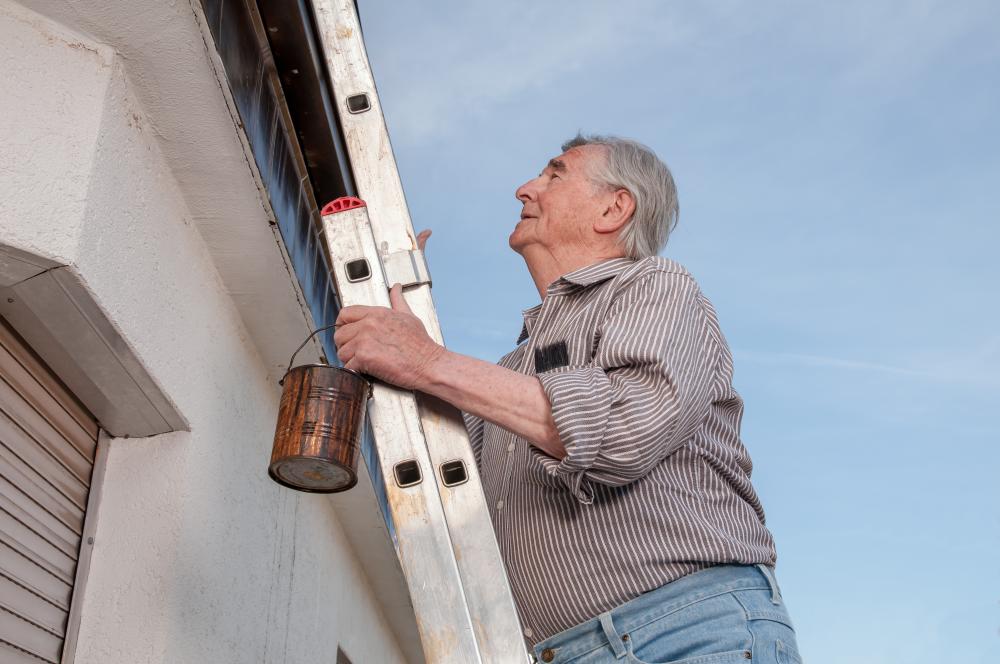Design for Maintenance

I was thinking about the role of maintenance in successful longevity as I contemplated replacing a light bulb that had been flickering in a fixture in my home. My CREATE colleagues and I have written several books about designing for older adults (e.g., https://www.routledge.com/Designing-for-Older-Adults-Principles-and-Creative-Human-Factors-Approaches/Czaja-Boot-Charness-Rogers/p/book/9781138053663 ; https://www.routledge.com/Designing-for-Older-Adults-Case-Studies-Methods-and-Tools/Boot-Charness-Czaja-Rogers/p/book/9781138052857 ) and as we point out, an oft-neglected topic in design is designing for maintenance.
Getting back to my specific example, I’ve had two LED bulbs, reputed to last for at least a decade, fail in under a year. One is in an open fixture that I can reach on a low stepstool, making it relatively easy to change, though aggravating to do so because of its short lifespan. The other is in a fan with a translucent glass hooding that requires unscrewing at least two of four fasteners to detach the hood to reach the bulb, requiring a ladder to get high enough to reach the screws. As someone in my “middle-old” (75-84) years I am far more prone to break bones when falling from heights than younger people, so climbing up a ladder is not an appealing process.
People have told me that one reason that they voluntarily move out of their homes is to avoid having to deal with maintenance issues, particularly if they don’t have younger family members around to help them with such tasks. Could we keep people safely at home longer if we had better design support? I can think of many candidates for improvements. How easy is it to change the battery in a smoke detector? (Older adults who were surveyed for a design contest at FSU about everyday problems mentioned smoke detector battery replacement). Obviously, you want smoke detectors to be near ceiling height to quickly detect smoke that rises and gathers at the ceiling, so putting them at shoulder height (convenient access) won’t work, unless they have built-in suction to pull in air from near the ceiling, though if that was done via a long tube it might offend someone’s sense of aesthetics. Yet, people might well be willing to trade-off lower maintenance cost for inferior aesthetics. I certainly would for light fixtures.
And don’t get me started on home appliances, motor vehicles, and all those now “essential” electronic devices (computers, tablets, smartphones, smartwatches, etc.) that require constant software updates to ensure security, and worse yet, battery changes after a few years to keep them operating without running out of battery life too quickly. Smartphones used to come with user replaceable batteries, but the move to make them waterproof probably killed the design option of providing easily detachable backs. Such support for battery maintenance is no longer available in today’s devices, meaning either a trip to a phone repair shop to nurse along an older phone, or the necessity of buying a newer one, perhaps a perverse example of planned obsolescence. Older adults are likely to be living in older homes, drive older vehicles, and have older electronic devices (https://pubmed.ncbi.nlm.nih.gov/36276351/ ).
So, here I am going to advocate for more than a “right to repair” for consumer products, https://www.repair.org/stand-up . Rather, I’m expecting product designers and manufacturers to support a “right to maintain”. Ensuring that we can provide long-lasting products with simple, inexpensive maintenance is going to be an important challenge for the design community to ensure successful longevity for our aging population.













